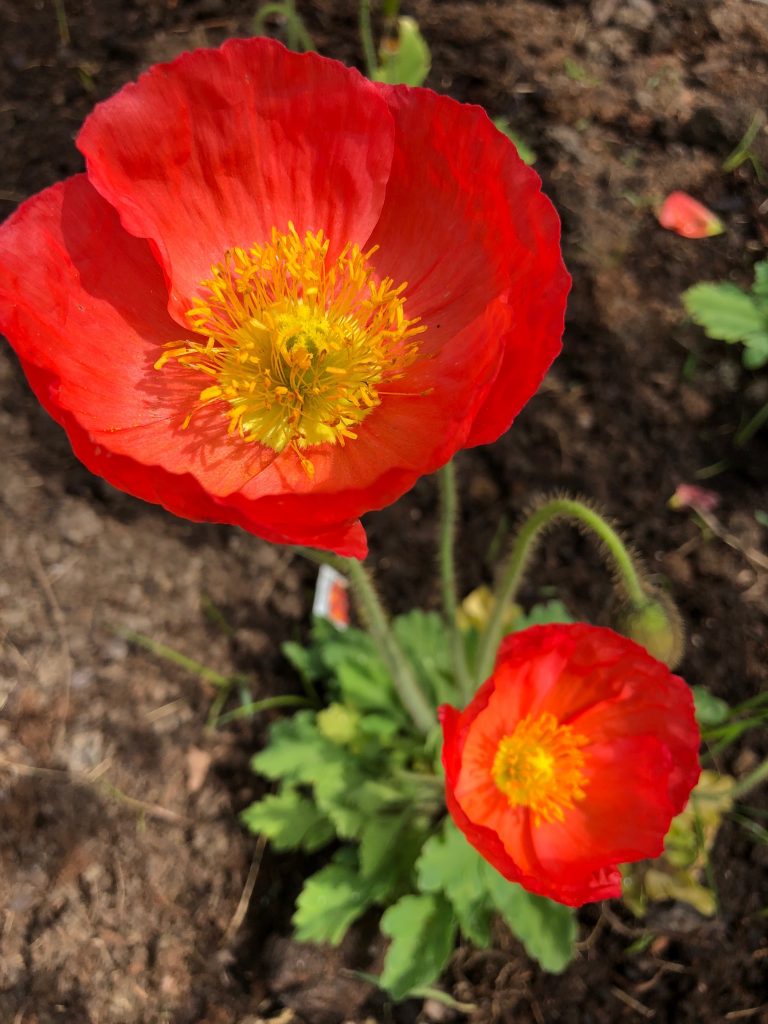Plant an Aromatherapy Garden
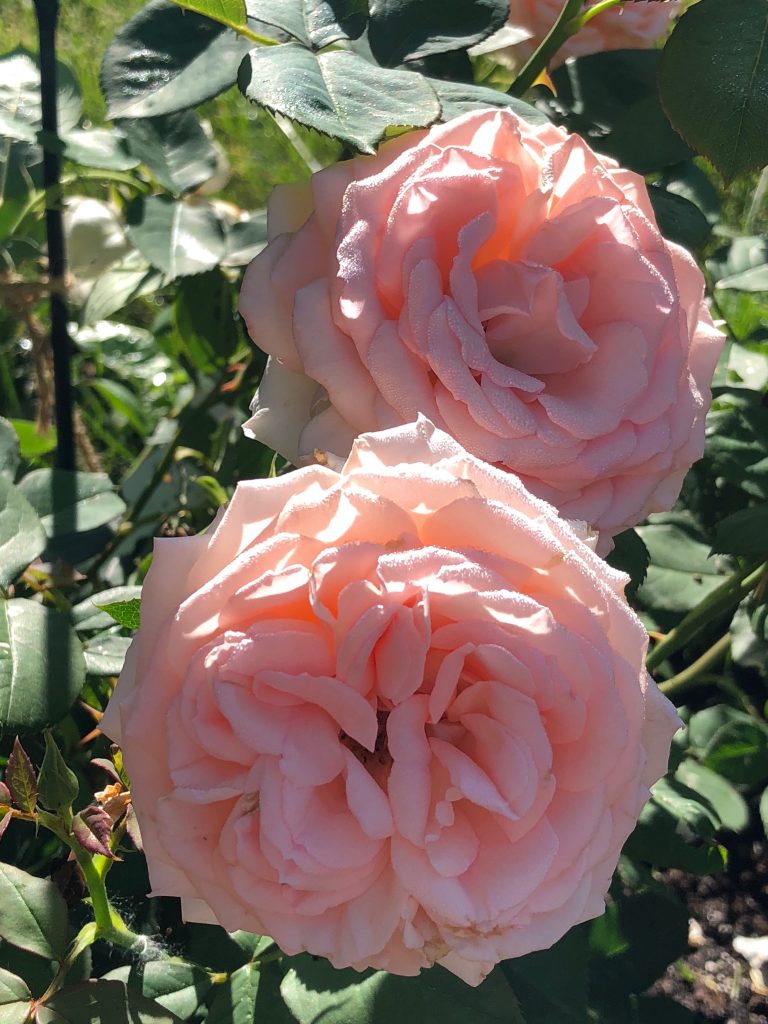 I didn’t think planting season would ever arrive this year.
I didn’t think planting season would ever arrive this year.
All winter long I’ve been anticipating growing an aromatherapy garden, but cold temperatures through April and dreary weather in the Midwest made me put my plans on hold. In literally one week in May, we went from late winter temperatures to early summer, and I eagerly jumped wholeheartedly into planting my scented garden.
But, I’m getting ahead of myself. Let’s back up a bit so I can briefly explain how I went about the concept of planting an aromatherapy garden, in case you want to also.
Researching an Aromatherapy Garden
As an aromatherapist, I have wanted to grow a garden that I could use in my business as a working garden for harvesting and as a beautiful place to let clients wander through. I spent some time during the winter reading and planning how to plant an aromatherapy garden. Some things to consider:
- Plot size. You can go small or big, or even all in containers if you need to. I decided to repurpose a 15 x 19 garden plot that we let lie fallow last year while we were gone on a trip.
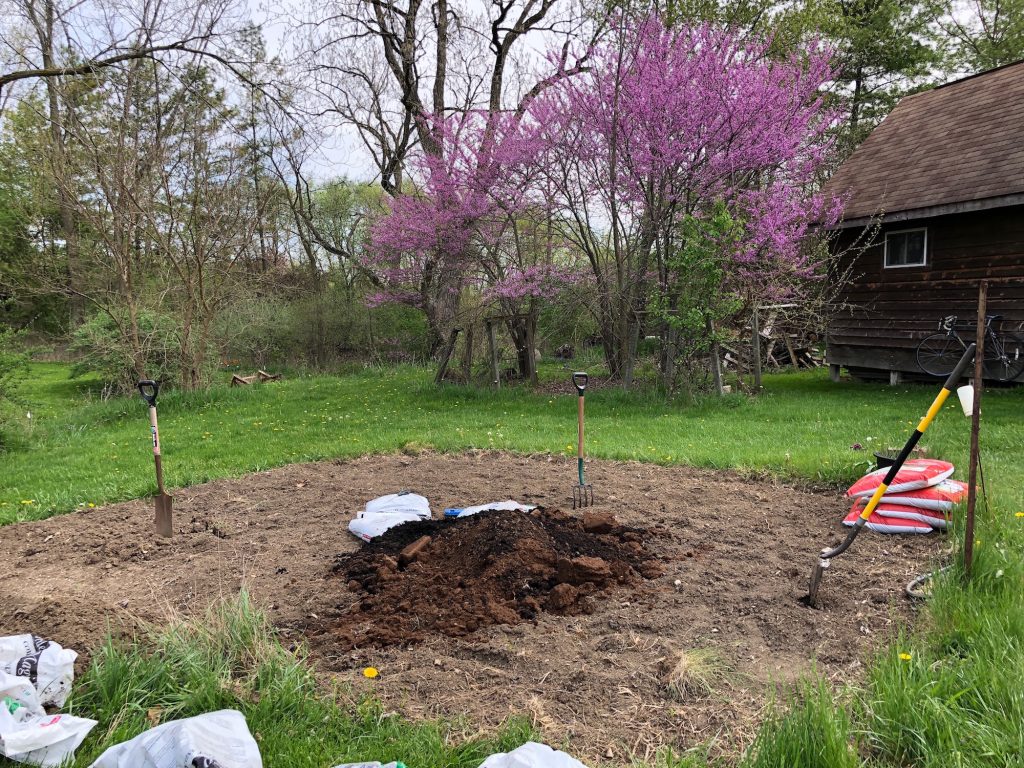
- Garden style. After scouring several garden books, I realized that I LOVE natural cottage gardens. That worked out perfectly because many of the plants that are considered cottage garden plants also happen to be aromatherapy plants.
- Plant list. Make a list of must-have plants that you want in your garden.
- Lay out. I made a rough sketch, with the emphasis on rough, of my plot size, fitting in where I wanted the large size plants to go and the garden path. I didn’t add in all the smaller plants, because I like to do that when I’m outside so that I can actually see and add them in as I’m working.
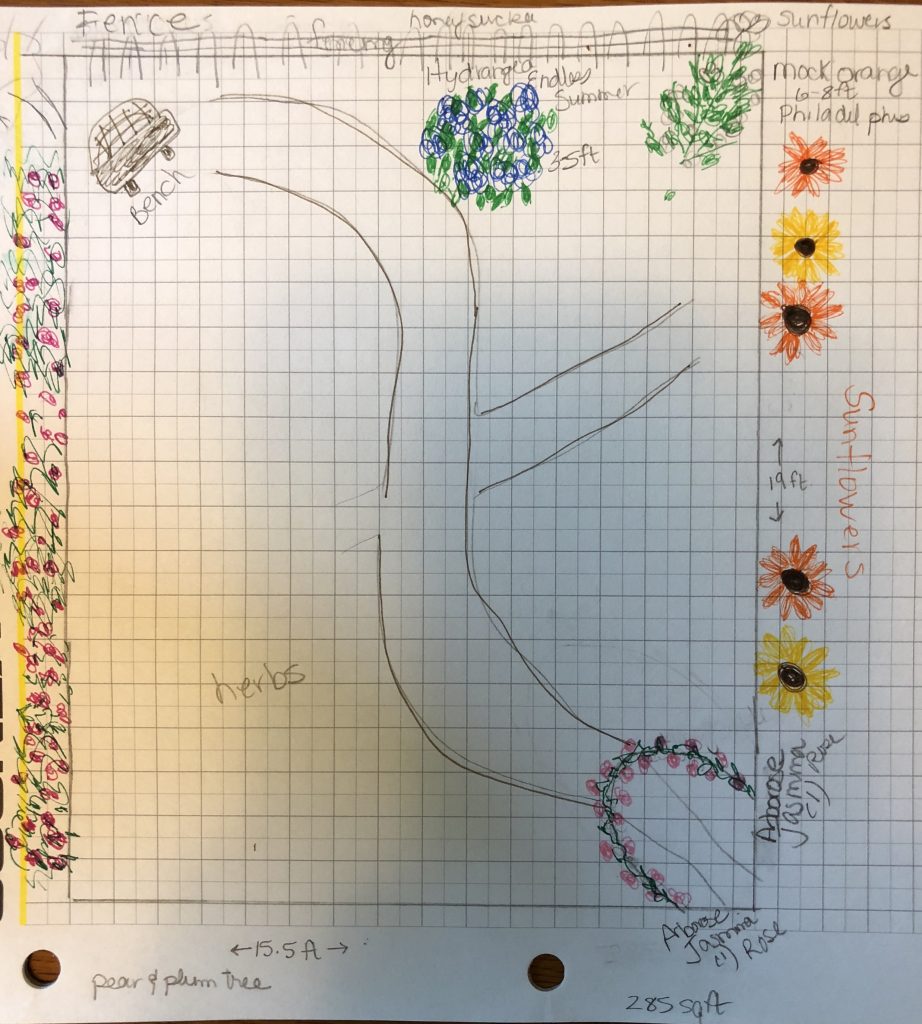
- Buy list. Figure out what you can buy locally and what you will need to order online.
- Budget. As we all know, buying plants is addictive and it’s easy to go overboard. At least it is for me! Try to stick to your budget.
- Care. I want my garden to be as organic as possible. I don’t like chemicals, and I want to harvest my plants to use in my products that I make for my Etsy shop and use with my consultation clients.
- Garden accessories. I knew I wanted an arch for the entrance of my garden and I wanted a fence for the back side that I could use for vining and creeping plants. I was so happy to find a vintage arch at an antique shop and an easy-install fence at Menards.
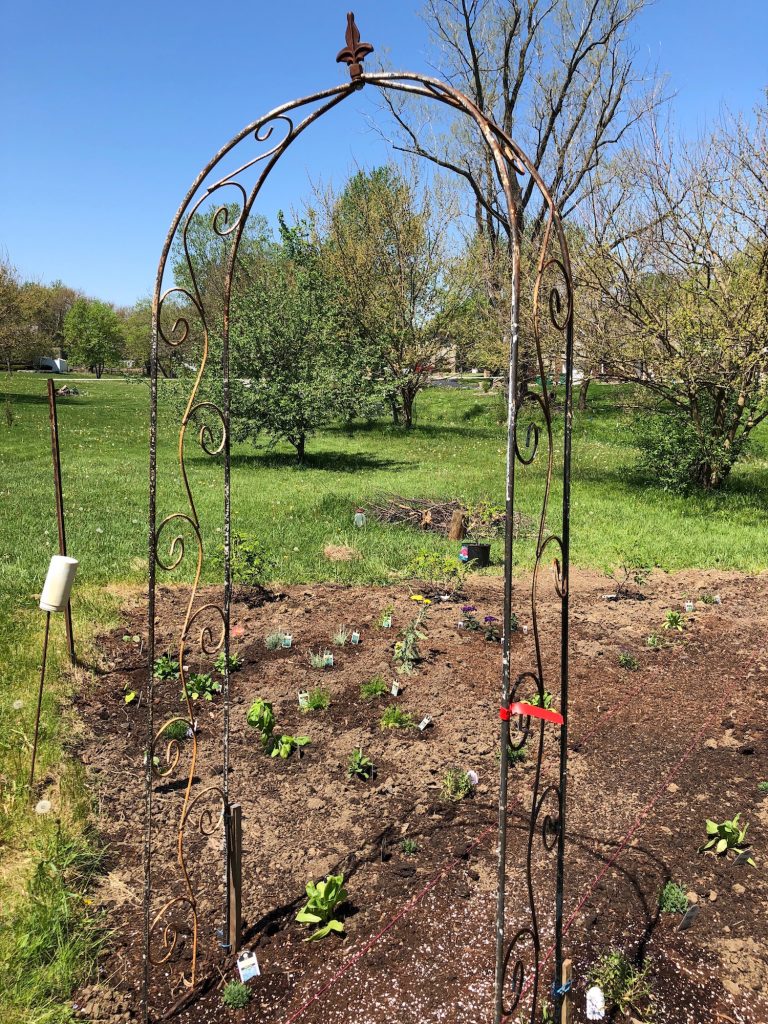
Aromatherapy Garden Plants
Here’s a list of the plants in my garden:
Calendula, lavender, alyssum, basil, rosemary, nasturtium, poppies, sweet peas, Larkspur, thyme, scented geraniums, German chamomile, yarrow, lemon verbena, curry (not the spice but helichrysum)
Heliotrope, Rosa Rugosa Hansa (rose hedges), pinks, hollyhocks, cosmos, violas, Shasta daisy, mock orange, musk mallow, mallow, butterfly bush, hydrangea, fragrant honeysuckle, a climbing rose called Pearly Gates, stock, pineapple sage, sage, sunflowers, and poppies
Whew! I know that’s a long list, but choose what you can handle and what you like and start there. If you’ve not gardened before, start small. You can always add more later. A simple, small aromatherapy herb garden of lavender, chamomile, scented geraniums, calendula, and mint would be a great start. Tip: plant the mint in a pot so that it doesn’t take over the whole garden.
Most of my plants I bought at a nursery, but a few of them I started from seed and transplanted into the garden. And I sowed the sweet peas and sunflowers directly into the garden.
Don’t Forget This Too
- Soil. In my case, I have clay soil, so I bought many bags of peat moss and bags of a combination of manure and compost. I dumped all the bags in the middle of the garden, mixed it up, and worked it into the soil. If you are planting in containers, you will want to purchase a potting mix formulated for containers. If you are planting in a raised bed, you’ll also probably want to amend the soil to enrich it for planting, especially if you’re using the Square Foot gardening method or something similar.
- Watering. Until your plants have established a healthy root structure, you’ll need to water them frequently. Try to water in the morning from the base of the plant and not douse the entire plant with water,which can lead to burns on your leaves and the start of fungus issues. If the weather is very hot, check them each day for watering and that goes doubly so for container plants.
- Weeding. Doing a bit each day/week can keep weeds at bay. Trust me. I learned this the hard way. It’s not fair, but weeds seem to grow waaayy faster than plants do.
- Feeding. Depending upon the plant, you may need to feed them to encourage growth/flowering. I work organic fertilizer into the soil before planting and then throughout the season I use compost, compost tea, and/or worm castings.
Enjoy Your Garden
It’s been about three weeks since I planted my garden. It’s been so much fun and so much work! I am learning a lot. I can tell my Pearly Gates roses will be my biggest challenge, as roses can be hard to grow organically, and mine are being attacked by bugs and fungus. We’ve had a very hot dry spell for May, so I’ve had to water a lot, but overall I am finding the process of growing an aromatherapy garden to be a joy. I keep finding more plants I want at garden shops and tucking them into the garden. It’s exciting to watch the plants grow and thrive.
Here’s a picture right after planting.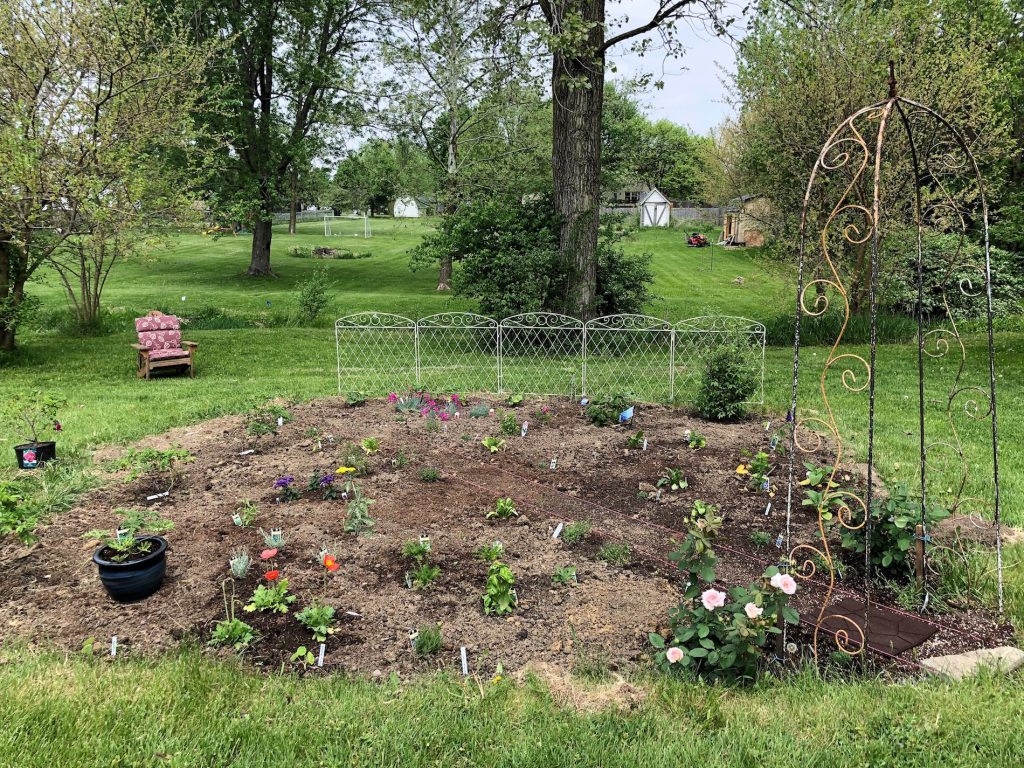
And here’s a picture three weeks later.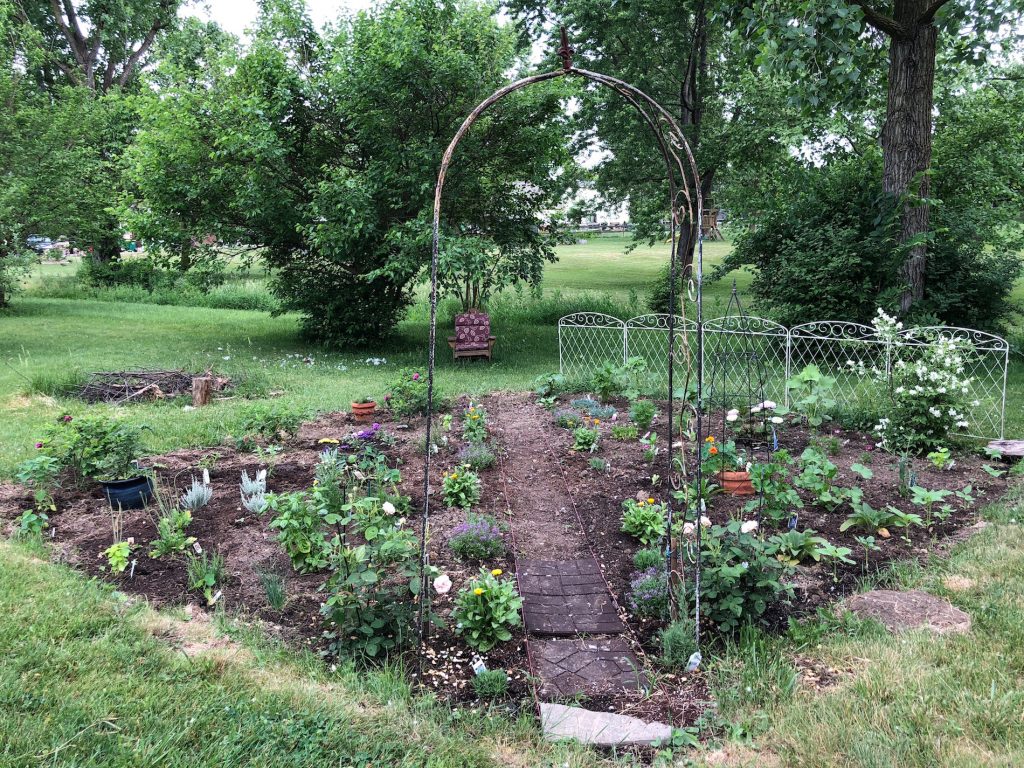
You can see, I still need to figure out what to do about my path. I’m leaning toward stone, so I need to finish that. I would also like to find a rustic bench to put at the end of the path.
In a future post, I’ll cover how I will be using/harvesting some of the plants.
Thanks for reading about my aromatherapy garden!
And now I’m wondering about you. Let me know what you’re planting this season.
Botanically me,

